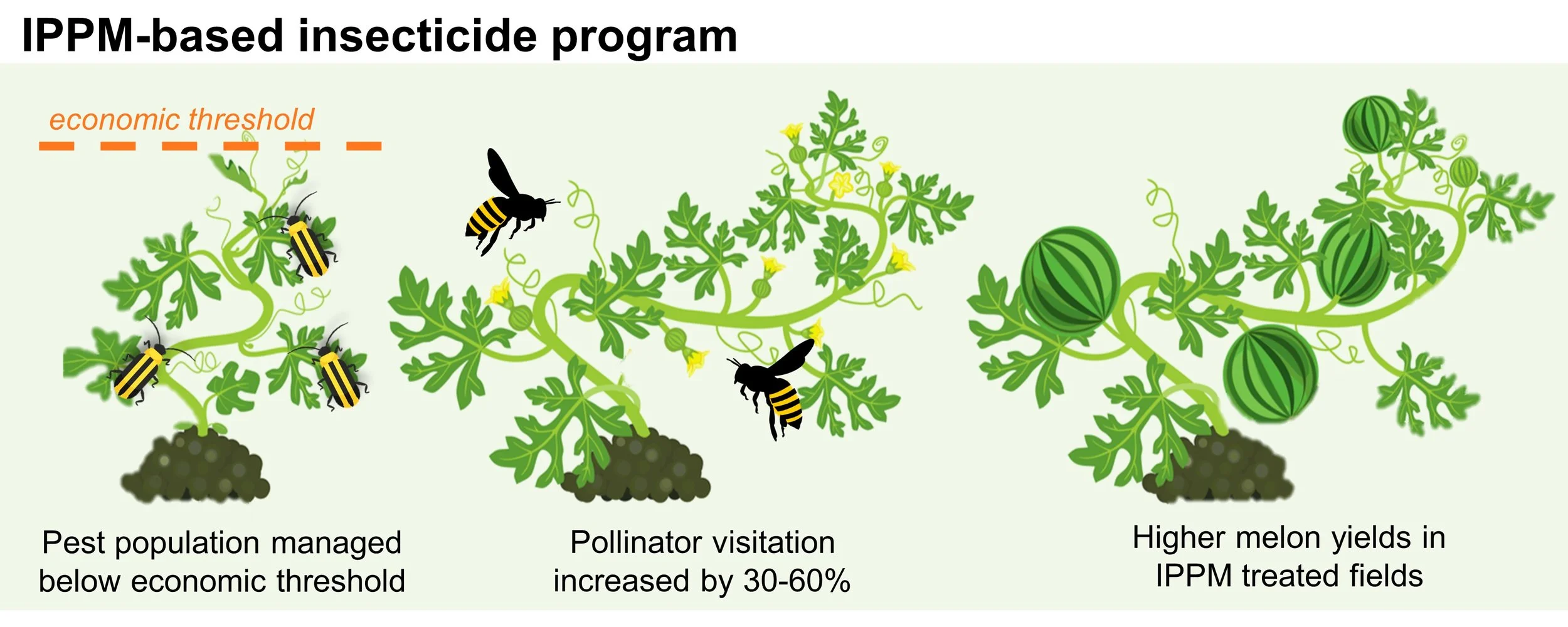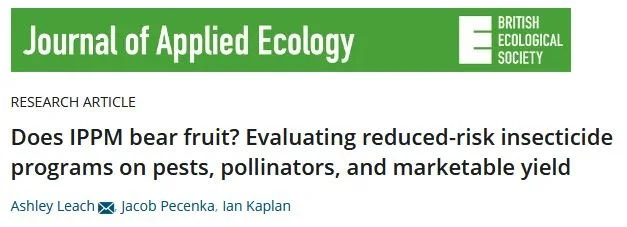Approaches to kill agricultural pests can also kill pollinators…especially when relying on pesticides. However, this doesn’t always have to be the case. In fact, optimizing pest management practices to limit negative effects on pollinators may result in a win-win-win scenario…excellent pest control, boosted pollination, and increased yields. This approach is also called integrated pest and pollinator management (IPPM). We tested different IPPM approaches in Indiana watermelon and were pleasantly surprised by the results. ;)
CLICK HERE FOR THE PDF.
Abstract
Integrated pest and pollinator management (IPPM) has been touted as a novel approach to control pests while mitigating negative effects of insecticides on pollinators. In addition to non-chemical approaches, IPPM programs focus on insecticide treatments with low bee-toxicity, threshold-based applications, and restricted timings to avoid sprays during pollinator foraging. However, the singular and combined effect of this approach on pollination services and pest management is understudied and generally lacks field validation.
In two field studies, we evaluated the effect of IPPM insecticide programs on striped cucumber beetle (Acalymma vittatum) management, pollination, and watermelon yield. The first trial (2020) featured insecticide treatments representing a factorial combination of 1) products varying in bee toxicity (bifenthrin, cyclaniliprole, and acetamiprid), 2) application frequencies (weekly vs. threshold-based) and 3) application timings (AM vs. PM); as well as an untreated control. These data were then used to inform a second trial (2021) that applied two insecticide treatments (IPPM based or grower standard) to commercial-scale (20-30 acre) fields in collaboration with regional watermelon farms. Weekly beetle densities, pollinator visitation, and yield data were collected to determine program efficacy.
Overall, beetle infestations were successfully managed with all insecticide treatments, none of which compromised marketable yield. In 2020, threshold-based insecticide programs offered statistically similar levels of pest control but required 20-80% fewer applications compared to a weekly program. Further, pollinator visitation was increased in threshold-based programs by ~42% across all products. The on-farm validation trial in 2021 upheld these findings; IPPM fields had effective beetle control but with 1-7 fewer insecticide applications compared to grower standard fields. IPPM fields also had 62% greater pollinator visitation and 49% more melons during harvest compared to grower standard fields.
Synthesis and applications: Our study demonstrates the capacity of IPPM programs to manage pests while mitigating negative effects on pollinators. In particular, administering insecticide applications by pest thresholds led to the greatest enhancement in pollinator function. These findings also suggest that growers can benefit from this approach with reduced insecticide costs while encouraging pollination in pollinator-dependent crops.

